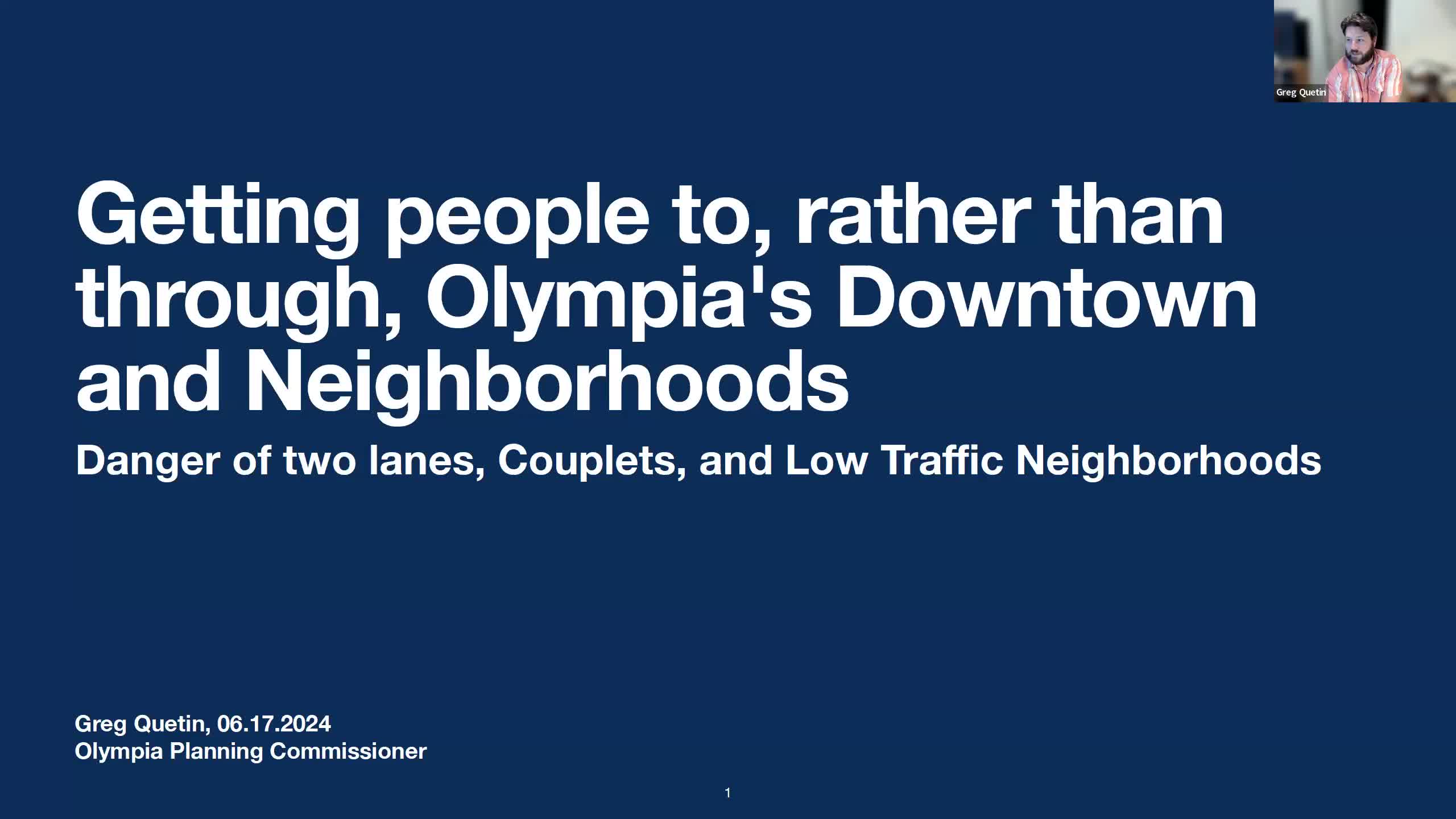City plans bold transformation for safer walkable neighborhoods
June 17, 2024 | Olympia, Thurston County, Washington

This article was created by AI summarizing key points discussed. AI makes mistakes, so for full details and context, please refer to the video of the full meeting. Please report any errors so we can fix them. Report an error »

In a recent government meeting, city officials discussed transformative transportation strategies aimed at enhancing safety and livability in Olympia. The focus was on reimagining downtown and neighborhood traffic patterns to prioritize pedestrians and cyclists while reducing through traffic.
Key proposals included the implementation of \"low traffic neighborhoods,\" a concept inspired by successful models in cities like Barcelona and Brussels. This approach seeks to divert heavier traffic away from residential areas, creating safer and more inviting spaces for walking and biking. Officials emphasized the need for infrastructure improvements, such as sidewalks and bike lanes, to support these changes.
A significant point of discussion was the issue of \"multithreat roadways,\" which pose dangers to pedestrians due to their design. The meeting highlighted the potential for reducing four-lane roads to three-lane configurations, thereby improving safety for all road users. This would involve rethinking major thoroughfares, such as the couplet of Fourth Avenue and State Avenue, to create a more pedestrian-friendly environment.
The proposed changes aim to create a comprehensive transportation plan that not only addresses safety concerns but also promotes a more vibrant urban core. By implementing transit priority streets and enhancing green spaces, the city hopes to foster a community that encourages walking, biking, and public transit use.
Officials acknowledged the challenges of balancing traffic flow with safety and livability goals, noting that some existing policies may conflict with these new initiatives. However, they expressed optimism about the potential for incremental changes that could significantly improve the urban landscape.
As Olympia continues to grow, the discussions underscored the importance of adapting transportation infrastructure to meet the needs of a diverse population while enhancing the overall quality of life in the city.
Key proposals included the implementation of \"low traffic neighborhoods,\" a concept inspired by successful models in cities like Barcelona and Brussels. This approach seeks to divert heavier traffic away from residential areas, creating safer and more inviting spaces for walking and biking. Officials emphasized the need for infrastructure improvements, such as sidewalks and bike lanes, to support these changes.
A significant point of discussion was the issue of \"multithreat roadways,\" which pose dangers to pedestrians due to their design. The meeting highlighted the potential for reducing four-lane roads to three-lane configurations, thereby improving safety for all road users. This would involve rethinking major thoroughfares, such as the couplet of Fourth Avenue and State Avenue, to create a more pedestrian-friendly environment.
The proposed changes aim to create a comprehensive transportation plan that not only addresses safety concerns but also promotes a more vibrant urban core. By implementing transit priority streets and enhancing green spaces, the city hopes to foster a community that encourages walking, biking, and public transit use.
Officials acknowledged the challenges of balancing traffic flow with safety and livability goals, noting that some existing policies may conflict with these new initiatives. However, they expressed optimism about the potential for incremental changes that could significantly improve the urban landscape.
As Olympia continues to grow, the discussions underscored the importance of adapting transportation infrastructure to meet the needs of a diverse population while enhancing the overall quality of life in the city.
View full meeting
This article is based on a recent meeting—watch the full video and explore the complete transcript for deeper insights into the discussion.
View full meeting
